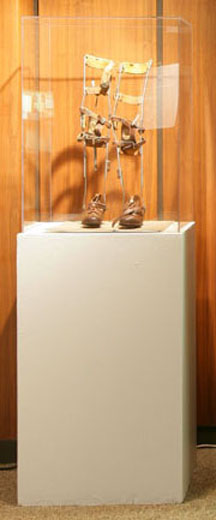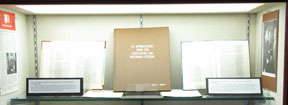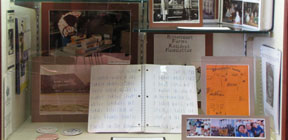Home » Exhibit Area » Exhibit 6 Case View
Custodial Institutions to Community Care - Assisting Developmentally Disabled People
The way American society has treated developmentally disabled people has come full circle. In the colonial era, they were cared for by families in their communities, and were idealized as children of nature, pure in their innocence and possessing unique knowledge. But by the 1830s, society began to embrace the belief that the way to treat the developmentally disabled was to institutionalize them. [continue here]


Child’s leg braces, ca. 1940-50. On loan from the Museum of DisAbility History in Williamsville, New York.

Top shelf: Books (Angels Unaware, The Child Who Never Grew), In Appreciation for the Association for Retarded Citizens); Ohio State Asylum reports (1861, 1862); photographs and a copy of the Ohio Story of Mental Retardation. View selected exhibits on this shelf...

Middle shelf: Pamphlets and photos of developmentally challenged children; minutes and photos of the Lott Sheltered Workshop Foundation; scrapbook and photographs of the Wood Lane School (1955-1978). On loan from the Wood County Board of Developmental Disabilities. View selected exhibits on this shelf...

Bottom shelf: YMCA and other pamphlets announcing camps for children with special needs; journal and photographs of residents at Bittersweet Farms; and the biography of Bettye Ruth Kaye. View selected exhibits on this shelf...
Referenced Canaday Center collections:
- MSS-195: Bittersweet Farms, 1974-2004
- Rare book collection (locate the individual titles above in the library catalog)